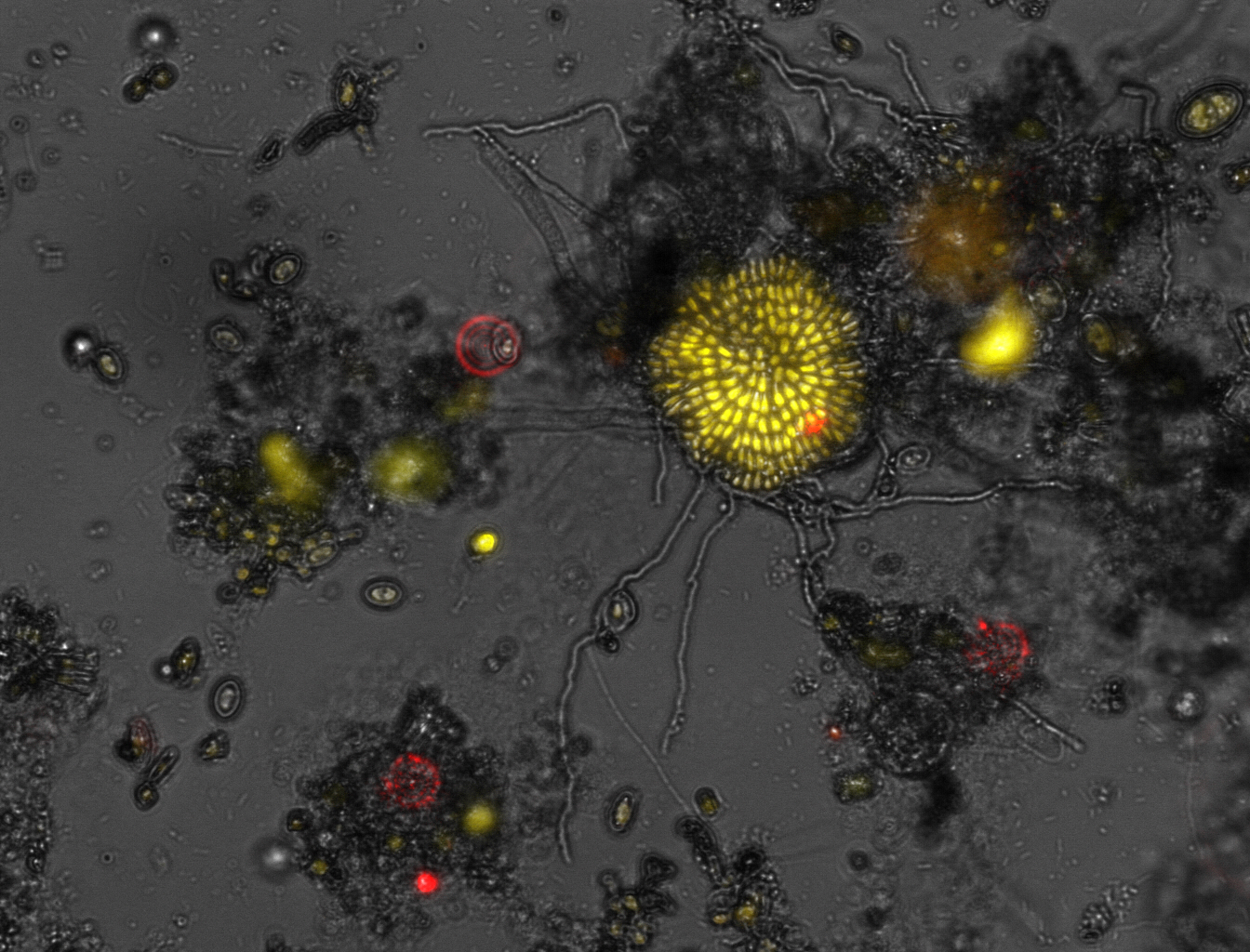Microfluidics of Epilithic Biofilms
Contacts : Nelly Henry
Since their introduction in the 1950s in Guadeloupe and Martinique, some organochlorine pesticides such as chlordecone have been widely used on farmland. Forbidden since the 1990s, this highly toxic molecule is still present in soils. Driven by water, land pollution gradually spreads to surrounding aquatic ecosystems, affecting both the water and the living.
It appeared that the compound accumulated in epilithic biofilms and along the food chain in fish and shrimp traditionally consumed by the inhabitants.
We intend to highlight the effects of chlordecone on the physical properties of these biofilms under controlled hydrodynamic context, directly related to diversity and the chemical composition of the community. For this, we benefit from collaborations with microbiologists and geochemists of the Museum National d’Histoire Naturelle and Université Antilles-Guyane.
As part of this project, we have already made a first mission in Guadeloupe in June 2015, which validated the strategies and techniques chosen for the study. A second mission in 2016 will be devoted to the specific study of the impact of chlordecone.
Mission 2015 :
The empty channels are designed in LJP and immersed in a non polluted river.
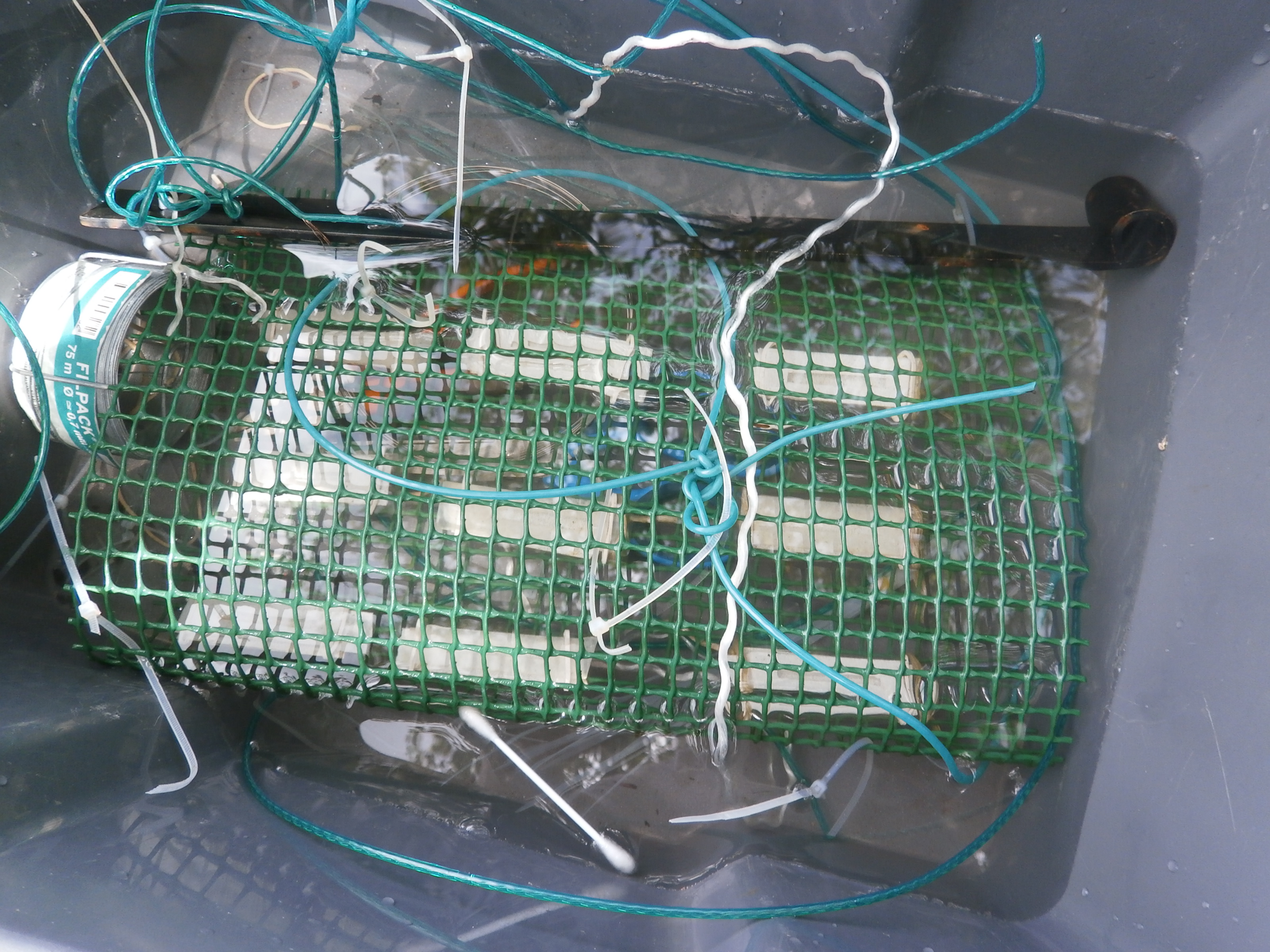
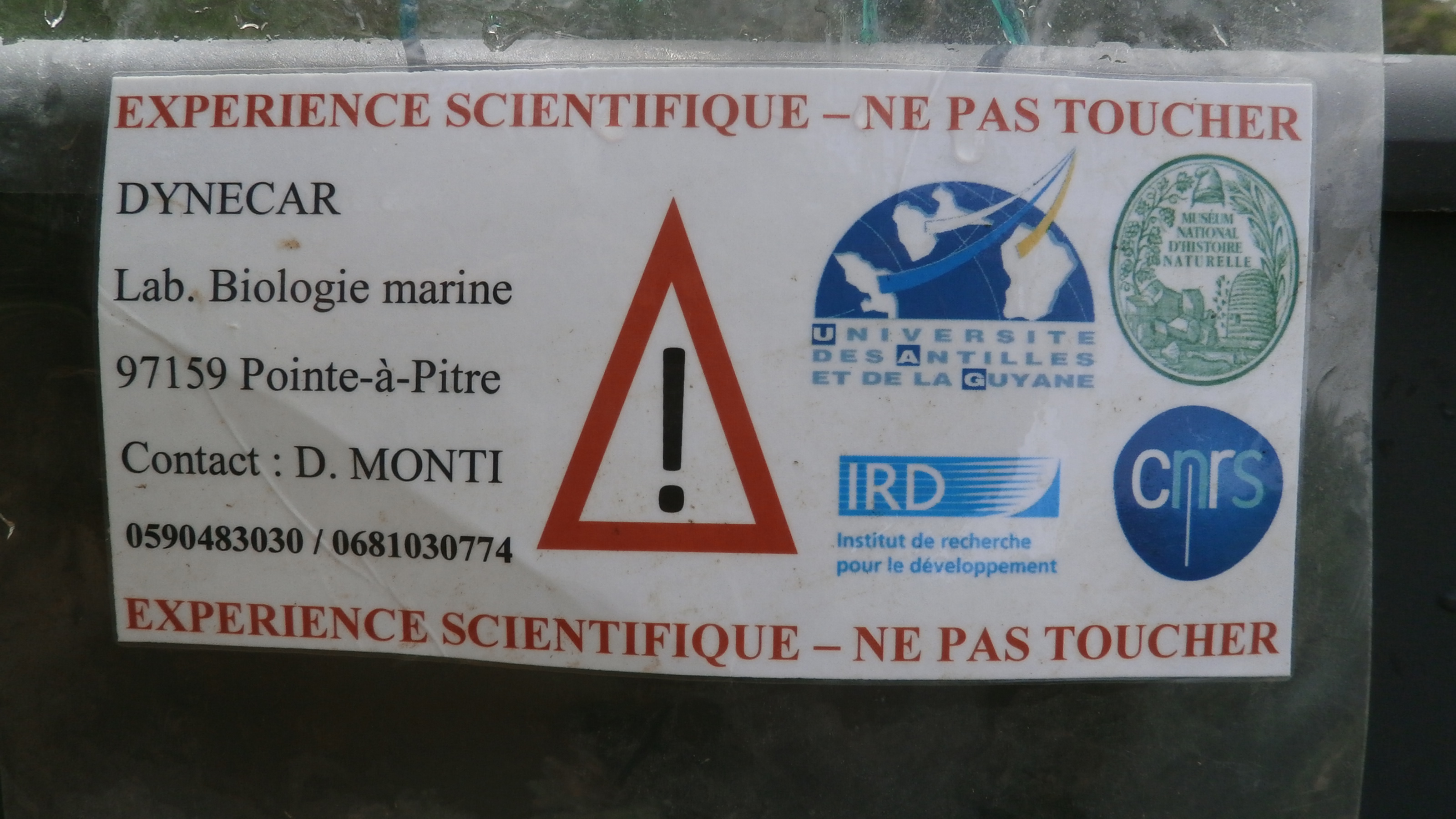
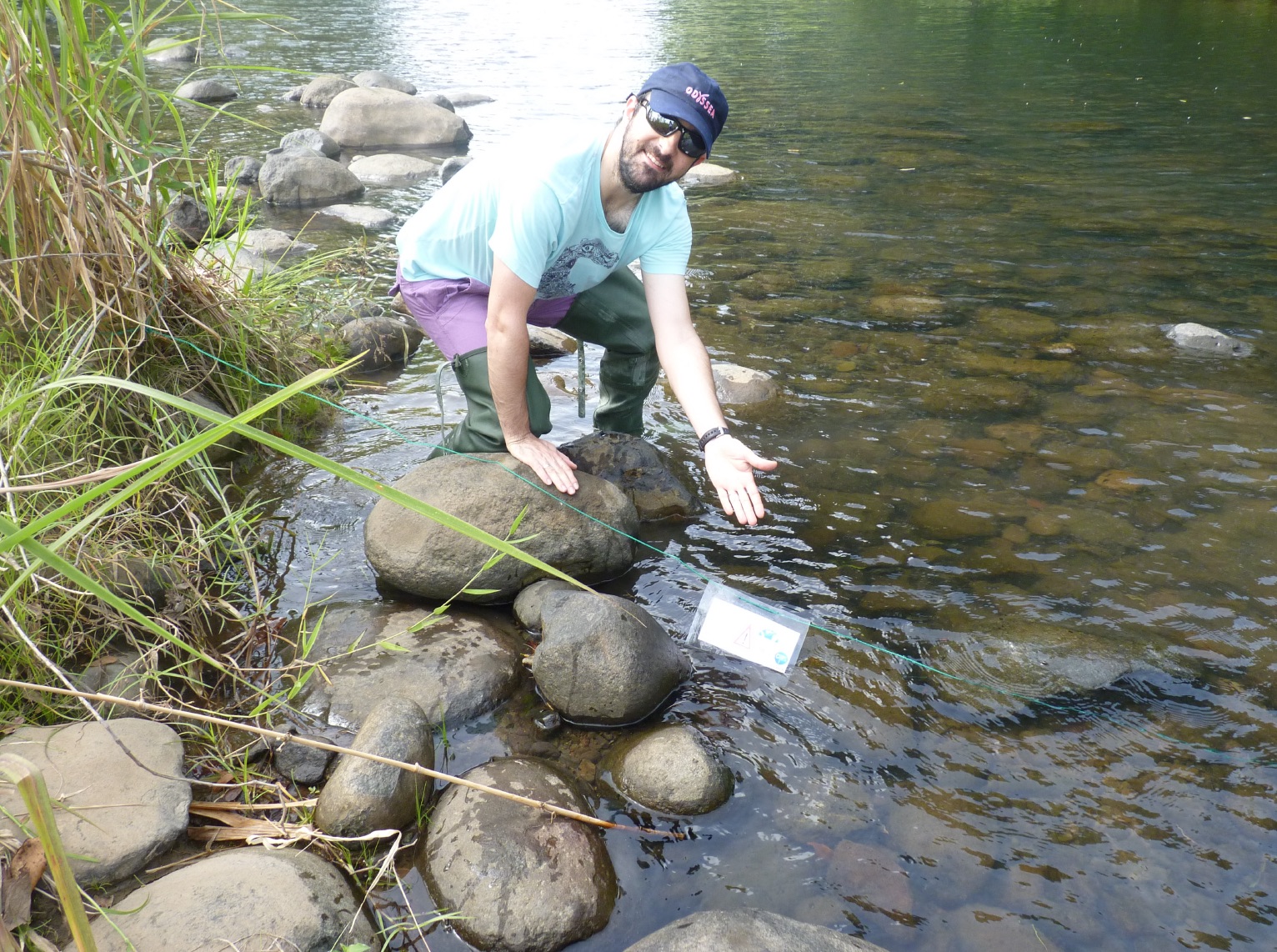
Some channels are regularly taken...
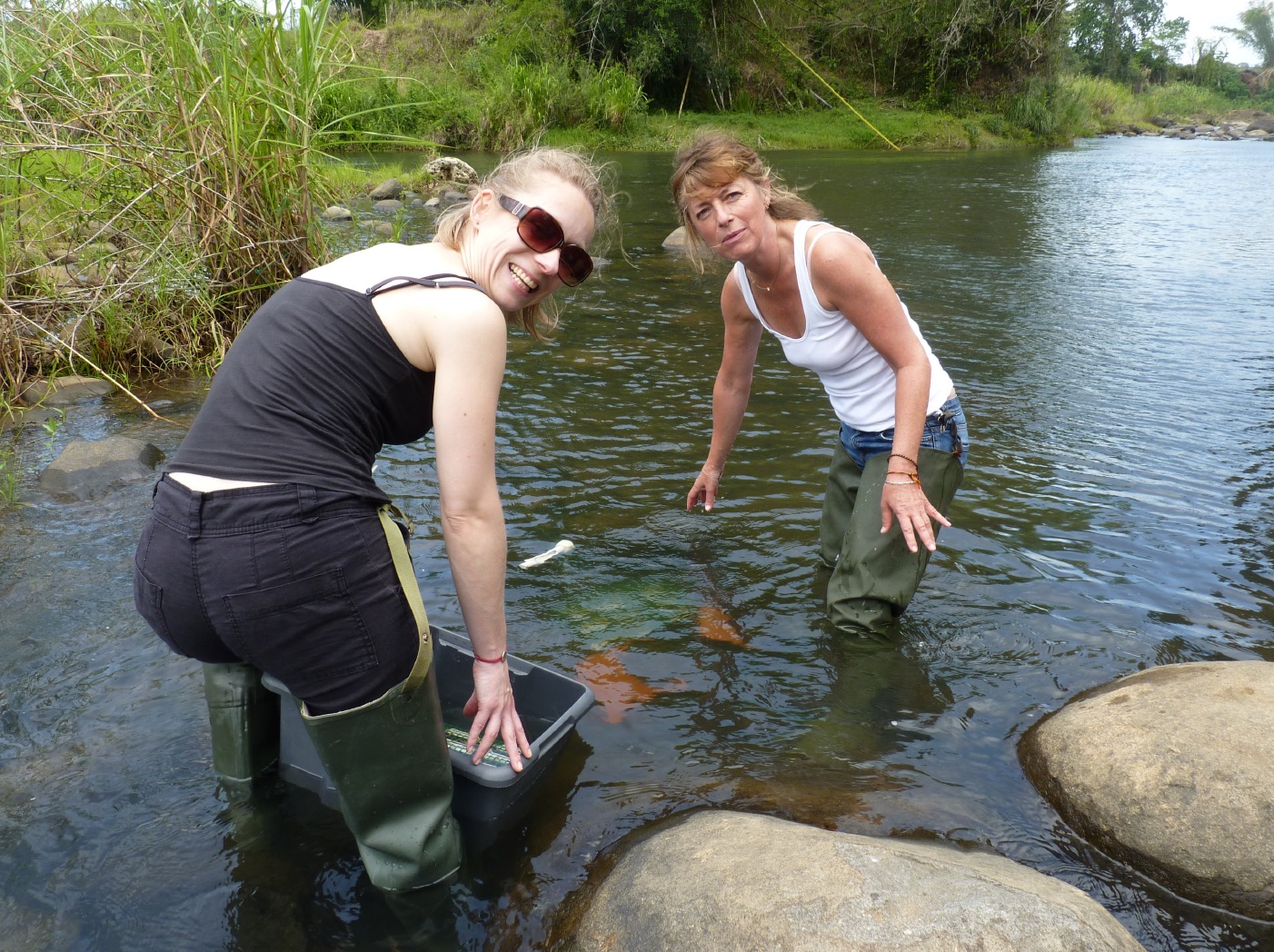
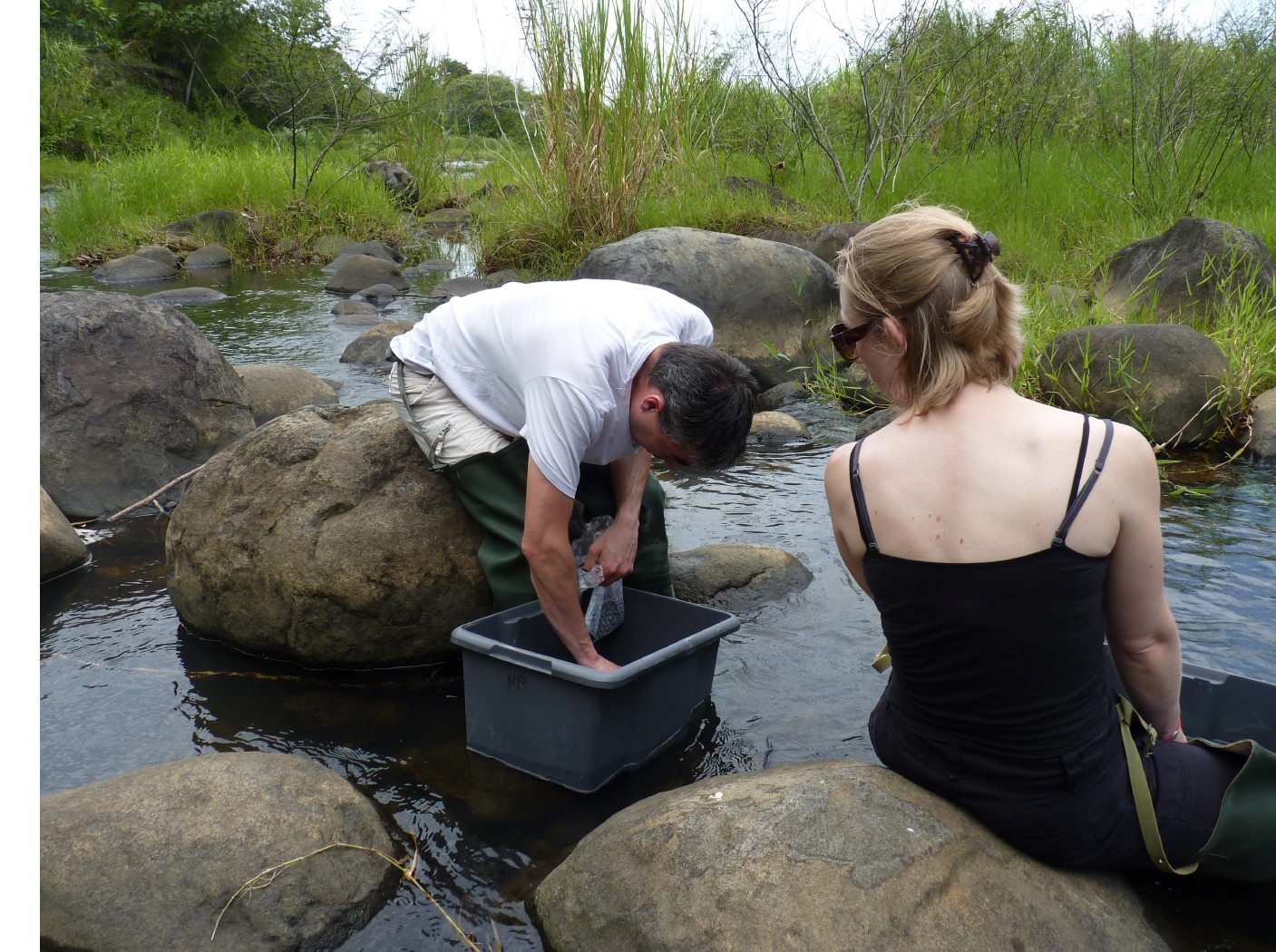
...brought to the laboratory, put under flow and observed under microscope.
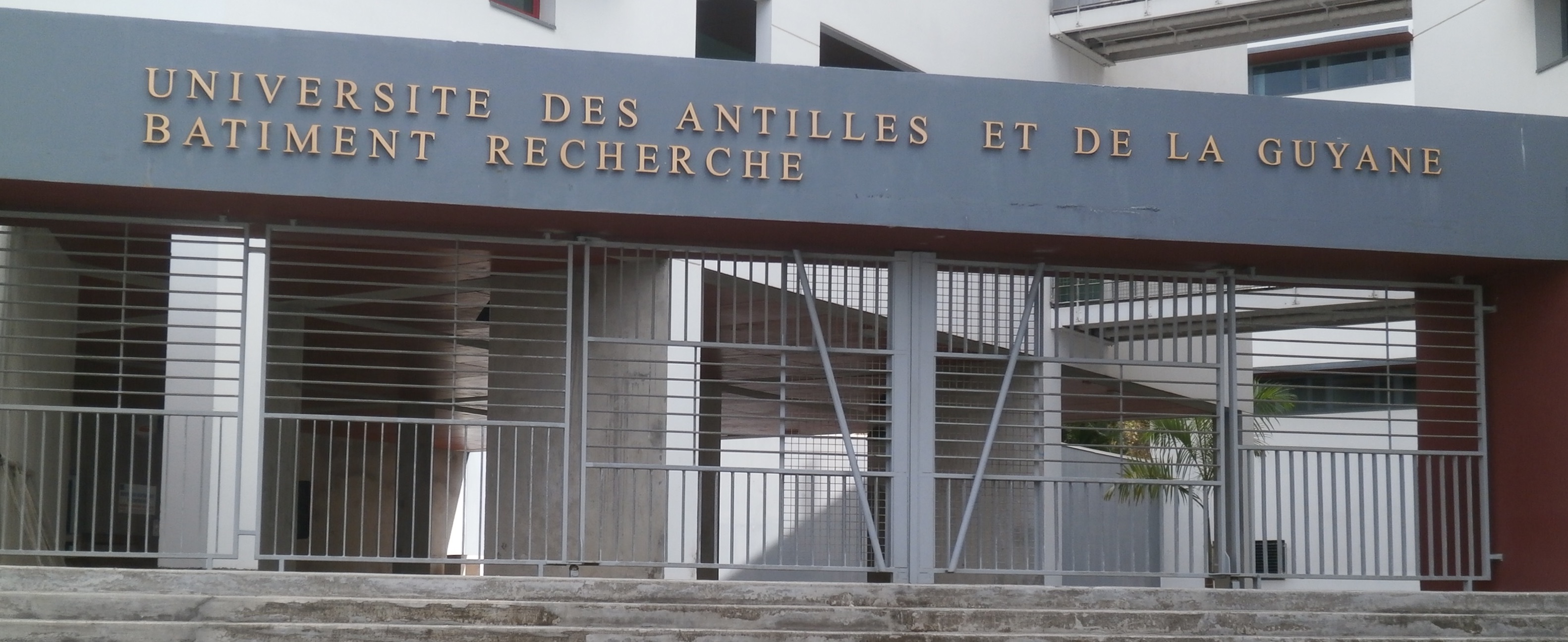
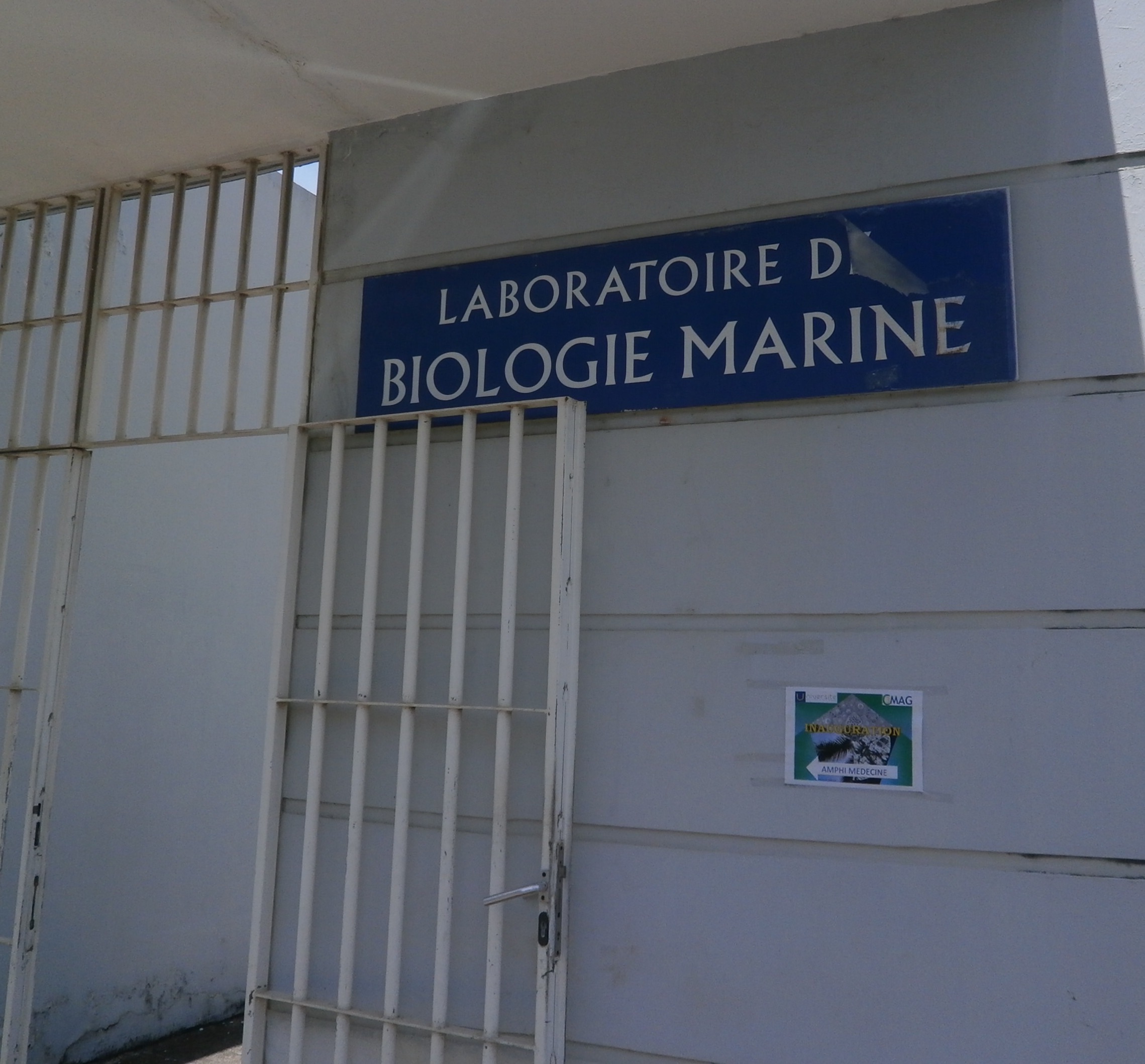
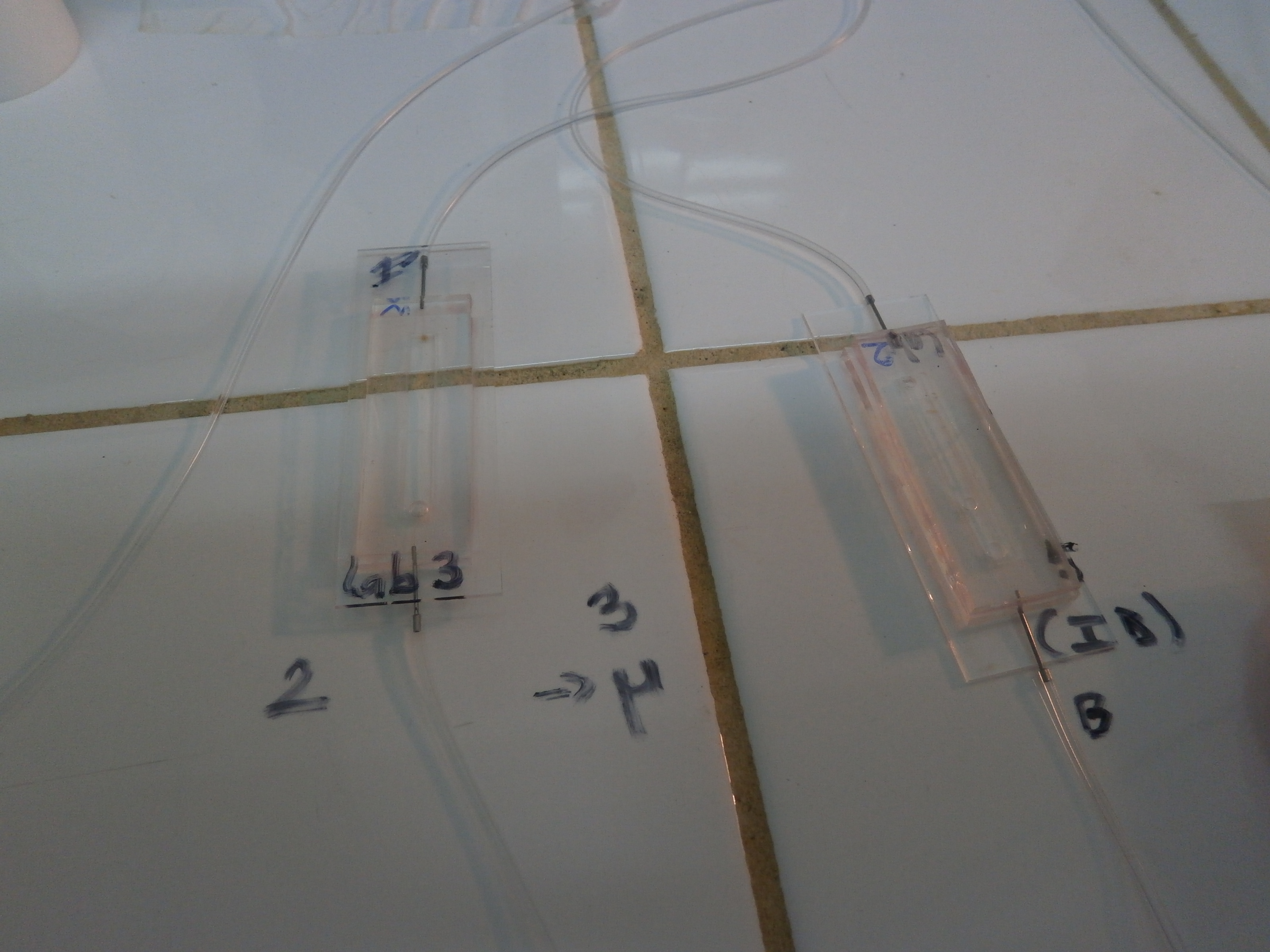
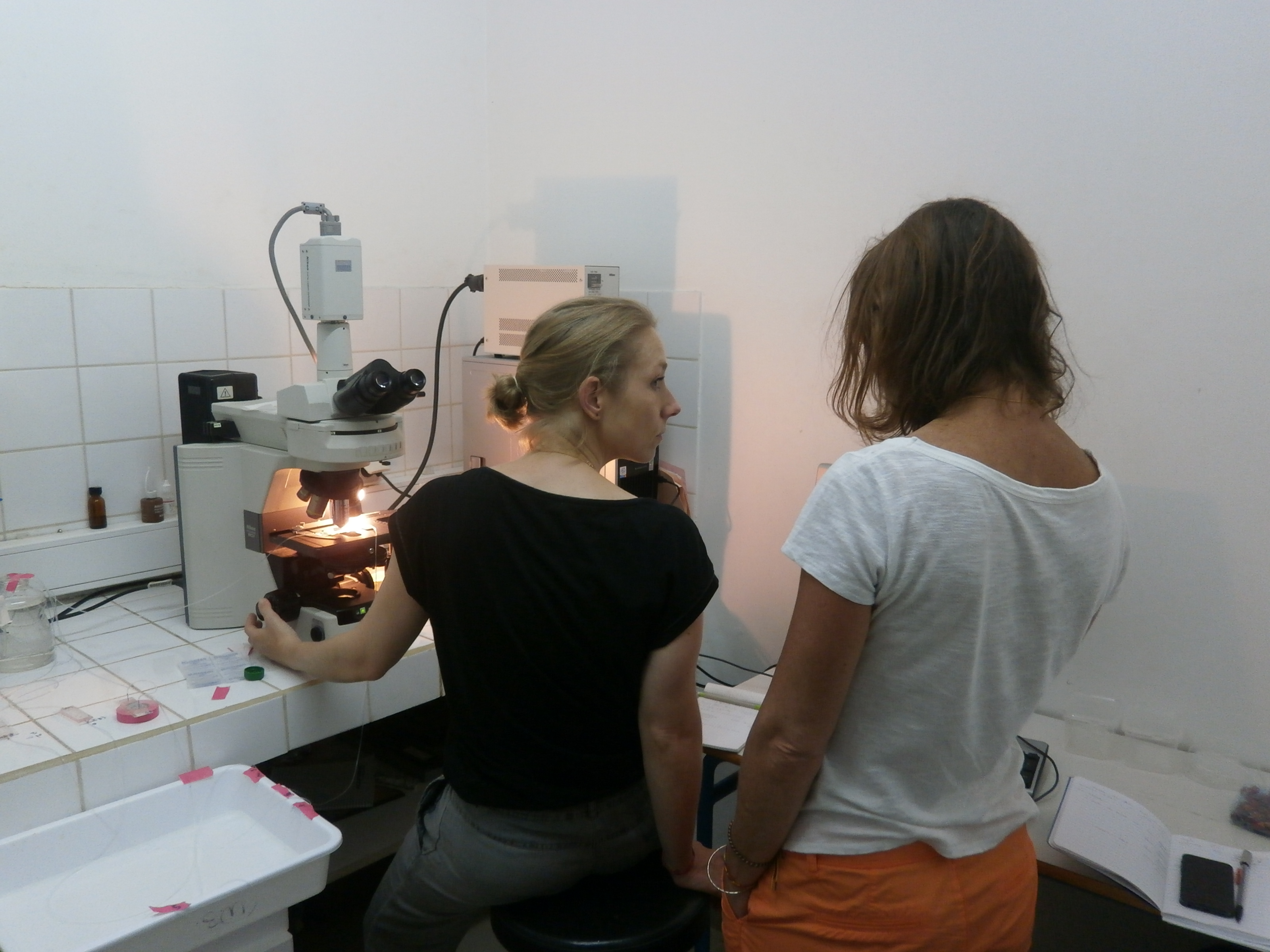
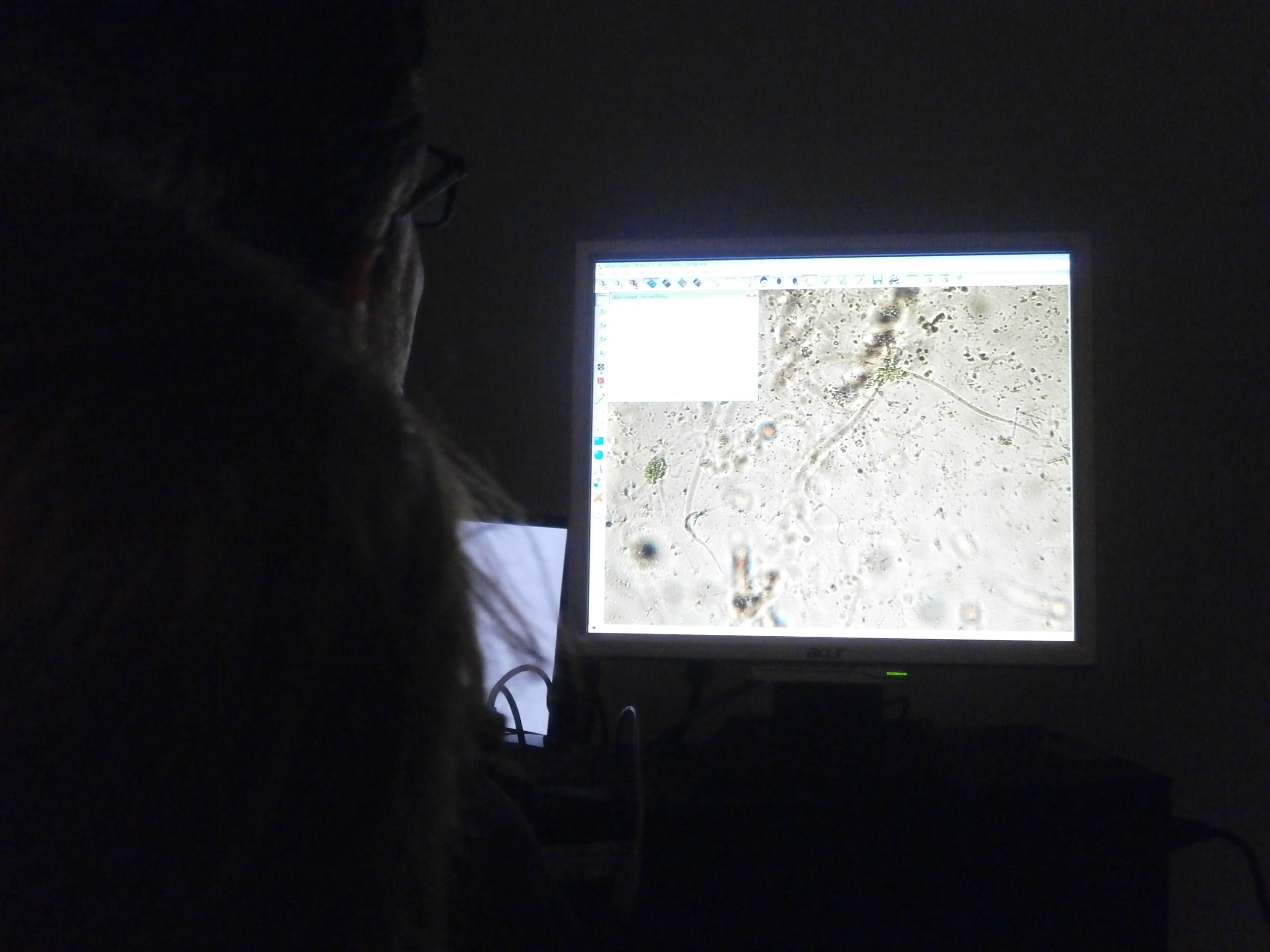
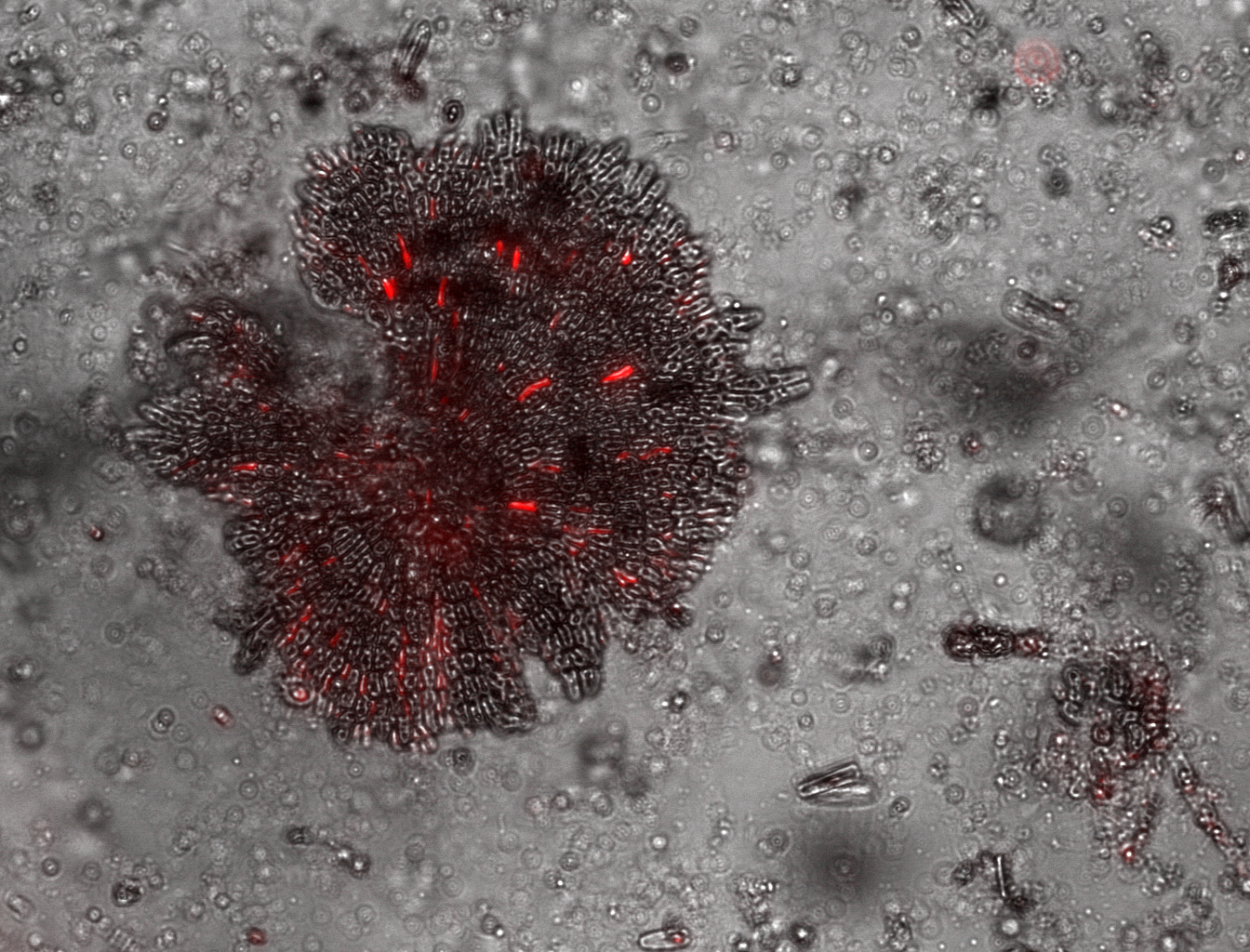
.jpg)
